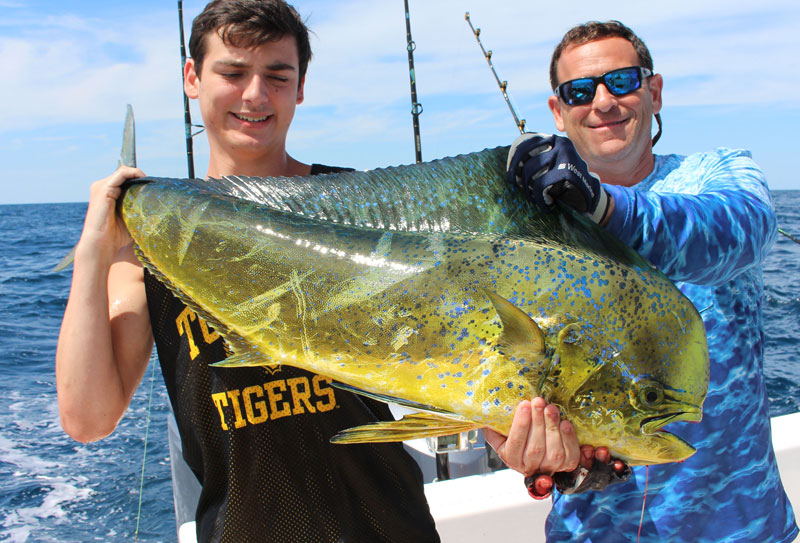Despite their aerial antic, awesome colors, and willingness to eat when many other offshore species seem lock-jawed, truth be told, for many offshore trollers mahi-mahi (properly called dolphinfish) amount to bycatch when species like yellowfin tuna or billfish are around. Most people are focused on setting the spread for those apex predators, and take the mahi as an extra. If they want to focus on this species bailing becomes much more common, especially when the fish are clustered around visible flotsam and commercial fishing gear. But that’s a shame. With a few small tweaks to your spread, you could greatly increase your chances of catching mahi-mahi on the troll – even if your hope and your focus is on encountering one of the more glorious offshore dwellers.

- Add a small plastic pink squid into your spread. Four to six inches is about the right length, and it should be rigged on leader no heavier than 60-pound fluorocarbon (heavier stuff reduces the lure’s bobbing and weaving, and you will rarely miss the diminished oomph because of the fish’s average size) with a one-ounce egg sinker inserted inside the squid. Set it in clean water, on a flat-line or short-rigger. Mahi-mahi love these little things, and not only will this boost your mahi catch, it will also distract them away from those ballyhoo you so painstakingly rigged.
- Follow the flotsam – closely. Many anglers already do this more or less, by trolling down a line of lobster pots or shadowing a weedline. To tease out the mahi, however, you’ll want to cut it close. As you choose your trolling path try to swing the smaller baits in your spread as close to the floating item as you can. When possible, anglers in the cockpit can up the ante by jigging the rigs passing closest to the cover.
- Turn back, after a strike. Many anglers pass a pot or weedline, pick up a mahi, and continue on their way. Fine. But where there’s one mahi-mahi there are often many more. Spinning around and taking another pass will usually lead to another knock-down, just as long as you have more mahi-friendly offerings in the spread.
- Keep a small metal jigging spoon rigged on a spinning rod, ready to cast and easily accessible. When a mahi jumps on the line and you can positively ID it right from the start, sling that spoon aft as close to the fish as you dare and jig it. Quite often the mahi’s brothers and sisters will be close by and the sudden appearance of another offering often leads to a multiple hook-up.
- Pull a bare rigged squid in the back of your spread, half the distance from your long riggers to your way-back. We’re not talking about the big squid commonly sold for rigging, but the little ones used for flounder bait. Clip the tip of the mantle, run a light fluoro leader through, crimp on a small egg sinker, and then add an 8/0 hook. Mahi-mahi will love it, but be forewarned – yellowfin will often chomp in this little guy, too.
The bottom line? What much of this boils down to is putting some smaller offerings with more mahi-appeal into the spread, while also taking a little bit of extra time to put them in front of the fish. Do so, and your cooler may well soon be overflowing.